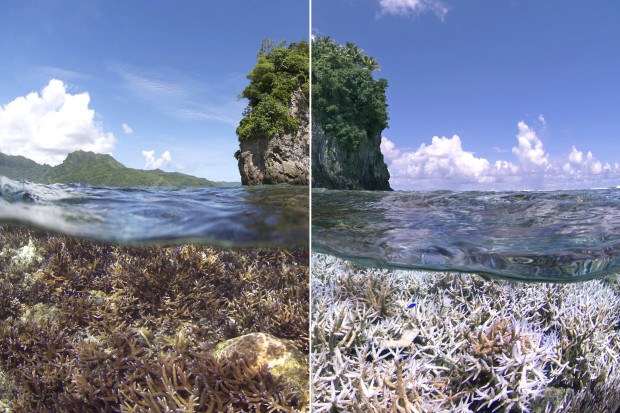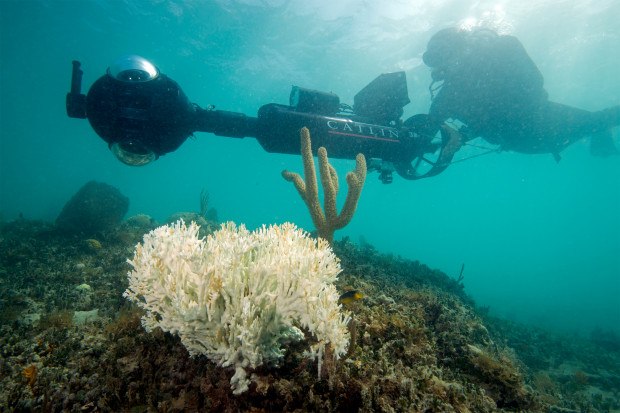

Earlier this month, a consortium of scientists confirmed that a “global coral bleaching event” is underway—only the third of its kind in recorded history.
XL Catlin Seaview Survey, in collaboration with the National Oceanic and Atmospheric Administration, The University of Queensland, and Reef Check announced the event on Oct. 8.
The bleaching event is expected to impact approximately 38 percent of the world’s coral reefs by the end of this year, killing more than 2,000 square kilometers (4,633 square miles) of reefs, according to NOAA.
Although reefs represent less than 0.1 percent of the world’s ocean floor, they help support roughly one-quarter of all marine species. That means, the livelihoods of 500 million people and income worth over $30 billion are at stake, the consortium said in a joint announcement.
Chip Cunliffe, external programs manager at global insurer XL Catlin said: “This global coral bleaching event, stretching around the world, clearly illustrates how natural forces can have significant impacts which can, ultimately, affect us all. If this does lead to the loss of a large extent of rich coral habitat it would be a major concern, given the role they play in protecting coastlines, as a source of food for millions of people and as a home to 25 percent of marine life.”
XL Catlin has sponsored the XL Catlin Seaview Survey since 2012.
What is bleaching?

“During a bleaching event, corals expel the golden-brown algae that grow within their body tissue, exposing their white skeletons,” a process that gives rise to the term “bleaching.”
Recorded for the first time in 1998 and again in 2010, global coral bleaching is designated when all three major ocean basins (Indian, Pacific, Atlantic) have recorded widespread bleaching episodes across multiple reefs spanning 100 kilometers (62 miles) or more.
What’s causing this?
“A major global bleaching event is considered one of the most visual indicators of climate change,” the collaborators state on the website http://www.globalcoralbleaching.org, which cites “increased ocean temperatures due to climate change” as one of the contributing factors.
The scientists say that the coral bleaching event is actually consequence of combined effects of the increased ocean temperatures together with the warming effects of an El Niño pattern and a warm water mass in the Pacific referred to as “The Blob.”
In a joint press statement, the collaborators further explained that “oceans absorb approximately 93 percent of the increase in the earth’s heat from climate change.”
The statement continued: “If the ocean temperature remains higher than the seasonal norm for a number of weeks the corals can die en masse, causing the loss of some corals that may be decades to centuries old.”

The declaration of the 2015-16 global coral bleaching event was confirmed by NOAA after its bleaching predictions were verified by scientists and citizen scientists in the Atlantic/Caribbean basin including rapid response surveying teams from the XL Catlin Seaview Survey, The University of Queensland and Reef Check. These reports added to the growing list of reports in the Pacific and Indian Oceans.
Source: XL Catlin Seaview Survey